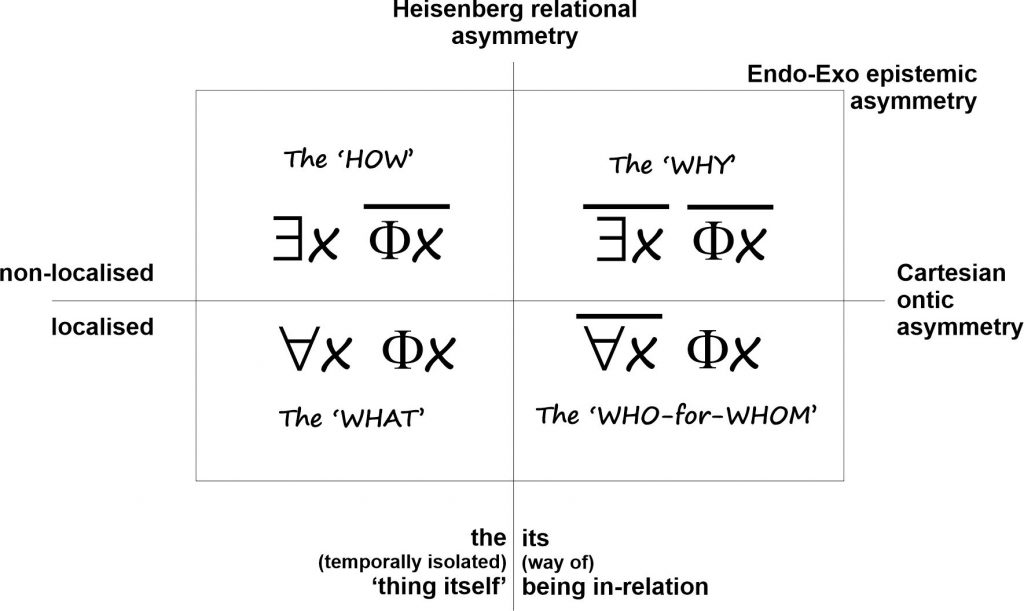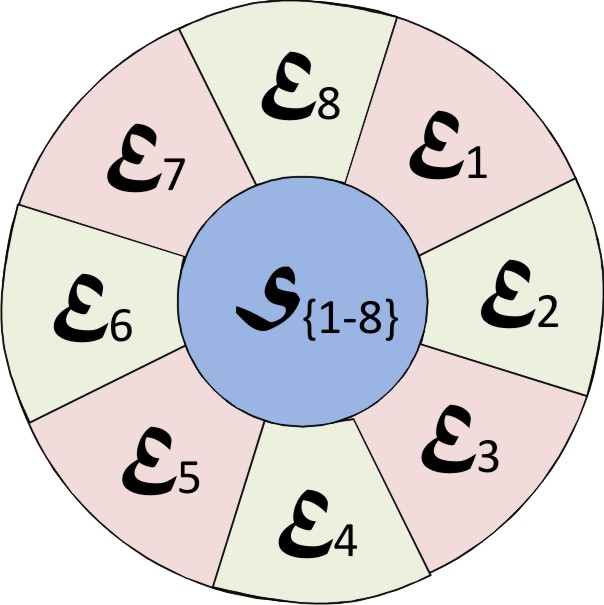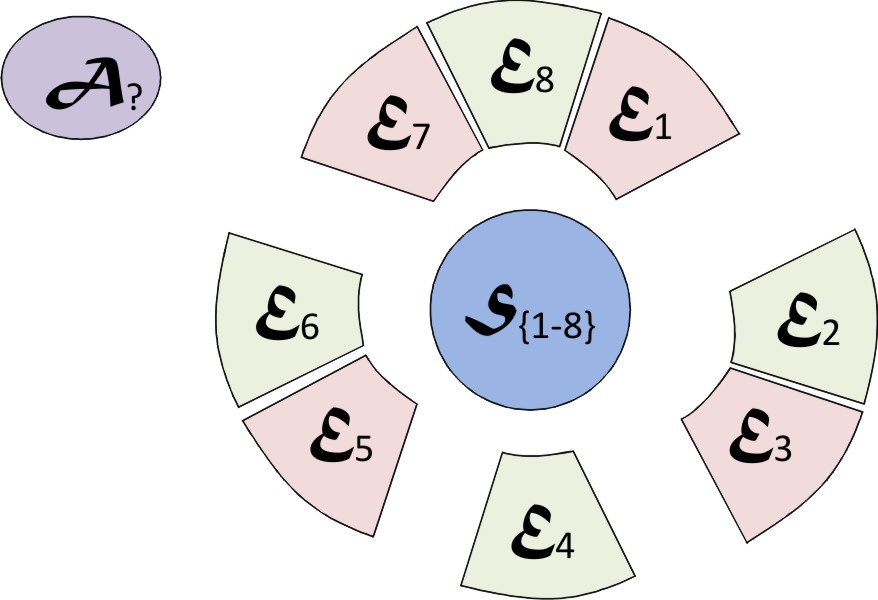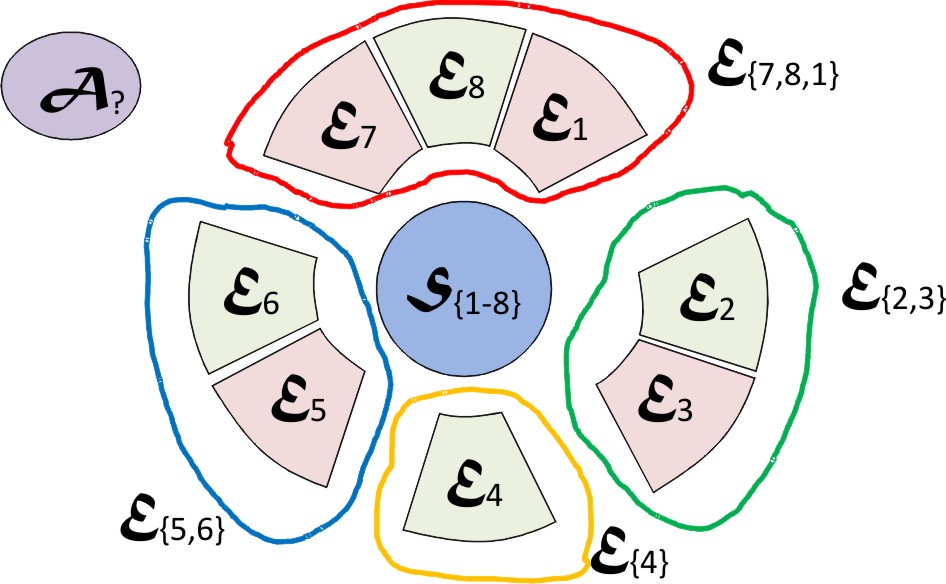I have expended a great deal of effort in trying to elucidate the difference between (for example)
- positional and relational strategies,
- North-South dominant and East-West dominant approaches to leadership,
- one-sided and multi-sided understandings of the nature of demand, and
- triple- and double-loop approaches to learning.
It all makes sense, but who really cares about this stuff?
Experience working with these ideas within organisations – for example in health care, manufacturing, professional services, and government – has shown the extraordinary difficulty of taking up these ideas in practice. Not only difficulty but often active ‘resistance’ in the sense that clients choose to turn a blind eye to all the issues raised until easier to deal with. So even when people care, why is this stuff so very hard to tackle in practice?
For a long time now I have proceeded on the assumption that better explanation, better methods and better communication would overcome these difficulties. But my experience in the context of particular consulting assignments is that this may be necessary, but is by no means sufficient. There is something more to be understood that underlies this difficulty. Two examples come to mind:
- the first involved a chemicals business making the material for containers. Top management’s assumption was that R&D would develop products that the business would then sell. What actually happened was that each customer wanted a different product matching their particular needs for containing their products (e.g. food, drinks, meals). The product of the business became the research and quality control supporting each customer. Before it became a top-performing business within the larger group, its chief executive had a nervous breakdown trying to hold the tension between what the larger group expected, and what the business actually needed to do – a breakdown caused by the incommensurability of the two business logics – a push logic in the larger group, and a pull logic for the business itself.[1]
- the second involved Orthotics clinics within the UK’s National Health Service.[2] An approach to restructuring these clinics was developed so that the patients’ conditions could be managed through through their lives within the context of each individual patient’s life. A number of clinics in different Trust environments proved to the satisfaction of the UK Treasury that for every £1 spent on Orthotics services, the NHS would save £4. But the changes did not even survive in their pathfinder sites. The approach to change was judged to be incommensurable with the approach to change being used across the rest of the NHS. Again, people’s lives were damaged, not least of whom were those of patients.
So what might the ‘something more’ be? I think it is that an hierarchical view of an organisation (what is later referred to as ‘classical’) involves a one-sided relationship to demand – the unit of organisation is designed to behave predictably independently of its environment. But an organisation designed to support multi-sided demands must not only treat each demand at its edges as different, but must also do so in a way that is dynamically responsive to the situation in which the demand arises – it has to be designed to do things in a way that can only be predicted if the dynamics of the environment in which this is happening is known. Such an organisation is inherently complex (not just more complicated[3]), cannot be held accountable in the same ways as an hierarchical organisation, must be as good at collaborating as it is at competing[4], and must deal with detail at a much finer level of granularity. Managing such a business is like stepping into an alternate reality that uses business network models that are as different from existing hierarchical corporate models as quantum realities are to classical realities. Instead of dealing with well-defined aggregations of performance, individual differences have to be managed in ways that are driven by the particular and individual contexts-of-use. This is what leads to the incommensurability – the behaviour of the one-sided hierarchical aggregations follow different rules to the behaviour of the individual multi-sided relationships.
The Quantum Reality
In classical reality, you can know where a thing is and you can separate it out from other things in order to deal with it. In a quantum reality, not only is there not a ‘thing’, but there is in its place a probability distribution of many possible states (superposition of states). This nature of this distribution is itself entangled with other distributions of states in its environment that affect each other in ways that defy classical explanation. True, this entanglement may result in aggregations of quantum states behaving as classical ‘things’ because of the ways in which they suppress multiple (superpositioned) states to present singular states qua ‘things’ through a process of environment-induced suppression (einselection). And a distribution of states taking up a singular state may be brought about by a process of decoherence with respect to the environment with which it is entangled, raising the question of within what coherence frame is something to be known about a system i.e. within what ‘non-local’ context. From this perspective, a classical reality emerges from an underlying quantum reality.[5]
Something of the strangeness of this quantum reality can be seen in this YouTube – a quantum view of the world – which speaks of the underlying nature of the world as being all relationships and not things. [6] The ‘incommensurability’ then is that the behaviour of the one-sided aggregations follow a different (classical) logic to the (quantum) logic of individual multi-sided relationships. So how does this quantum metaphor apply to our understanding of organisations?
The Quantum metaphor
We can think of the decoherence of quantum effects as being produced by the accountability systems of an enterprise’s sovereign hierarchy, exercising control and accountability over the behaviours of its task systems in order to bring about a ‘classical’ reality. On the basis of these aggregating effects, generalisations can be made about the particular behaviours of the enterprise in its environment. The classical reality is constituted by those behaviours that are measured by the enterprise’s accountability systems, the consequences of which are a one-sided relationship to the enterprise’s environment. This understanding of the enterprise makes the accountability system AS a part of the enterprise system S in a one-sided relation to its environment E i.e. the enterprise system defines its environment.
But what happens when the enterprise system is interacting with different subsystems within its environment, each one of which is demanding the enterprise to behave differently because of the multi-sided nature of the context with which the enterprise is interacting? Consider the enterprise to be a clinic responding to different patients’ conditions. We can think of each patient’s multi-sided context as selecting one particular state of the clinic consistent with the nature of their condition. Using the metaphor of einselection, we can think of the ‘agility’ of the clinic as its ability to be in different states for different patients at the same time (i.e. within a given tempo of response to the environment), these different states being thought of as the enterprise system exhibiting a number of quantum states with some probability distribution:
But what does this do to the previous classical assumptions built into the accountability system? In effect, the ‘whole’ enterprise system can no longer be defined in a way that is independent of the different environmental subsystems with which it is interacting – to understand what kinds of agility it is or can be capable of, the accountability system has to be able to superpose the multiple states constituted by the enterprise system’s multiple relations within its larger ecosystem. Understood in this way, the sovereign hierarchy of the enterprise has been forced to surrender sovereignty to its different relationships with its different customers to the extent that it has to respond to those customers’ particular contexts i.e. has been forced to take on multi-sided relationships with its environment. This may be for reasons of competitive survival or for the public good, but either way, the enterprise has to be able to deal with the particular ‘local’ characteristics of each individual demand. From the perspective of the sovereign hierarchy, its agile task systems can no longer deal in certainties, but rather must manage across a range of probable varieties of relationships with sub-environments. This is the analogue of the quantum reality – the multi-sidedness of the particular relationships means that they select the ‘local’ nature of the enterprise within a larger ecosystem.[7] The accountability system can still make generalisations, but they have to be made from a different place i.e. as a part of the environment of the enterprise system, and expressed in terms of ‘local’ multi-sided relationships within the context of the particular nature of their relationship to their local contexts i.e. within local ‘coherence frames’:
In practice there may be correlations between sub-environments in the way they select local states of the enterprise, so that multi-sided markets may emerge for particular kinds of multi-sided relationship (represented here for example as composite sub-environments E{7,8,1}. In our clinic, these multi-sided markets would correspond to closely related patient conditions amenable to similar treatment strategies:
It is in this sense that the notion of an enterprise moves from being based on a classical hierarchy to one based on the superposition of a number of different states for a given tempo of responsiveness to its environment, with all its implications for the agility of the enterprise’s infrastructures, and the need to shift the focus from the enterprise to its ecosystem.
Observing behaviours
Finally, the relationships of the enterprise to its environment, whether one-sided or multi-sided, will be constrained by the way its behaviours are embodied, i.e. by the nature of those behaviours atributed to it. The following space, in which three asymmetries distinguish four aspects of its embodiment, provide a way of thinking about how much of its relationship to its environment the enterprise includes in the way it understands its behaviour: [8]

- The Cartesian ontic asymmetry between localised assumptions about the behaviour of the enterprise and non-localised models governing behaviours that are generalised across contexts-of-use;
- The Endo-Exo (endogenous-exogenous) epistemic asymmetry between decoded behaviors and the encoding that is constitutive of the enterprise (the encoding is inside the box); and
- The Heisenberg relational asymmetry between behaviours that are temporally isolated across all sub-environments of a system and behaviours that are dynamically relational within particular sub-environments (local).
These asymmetries, the second and third of which depend particularly upon understanding an enterprise in terms of the quantum metaphor, appear in a number of blogs:
- Within the quadripod, where a footnote on the railway metaphor used refers forward to the ways in which an organisation inscribes itself through its behaviour in terms of three asymmetries;
- Within by what authority are we to follow, where the three asymmetries, in describing the way being is articulated, provide a way of accounting for performativity; and
- Within crises of delegation in recognising new truths, where the third asymmetry, in describing the ways in which being is taken up (aka embodied), situates origination itself.
What is the underlying ‘something’ to be understood?
It is that the transition from a one-sided to a multi-sided relationship with an environment confronts the sovereign entity with a need for a fundamentally different way of managing its viability. This is based on the different order of complexity/granularity through which viable behaviours may be constituted, and the presumption of a corresponding quantum organisation able to create requisite agility through being able to superpose multiple states of relationship to its sub-environments within its overall behaviour.
Notes
[1] This is a reference to John Hagel’s work on Push versus Pull. A recent blog by him emphasises the extent of the shift involved in moving from scaling efficiencies to scaling learning… From Race Against the Machine to Race With the Machine.
[2] Written about in Meeting the Challenge of Health Care Reform, and Why critical systems need help to evolve.
[3] This is a reference to the distinctions between simple,, complicated, complex and chaotic in the drivers of organisational scope.
[4] This is a reference to the particular challenges of edge-driven ccollaboration
[5] This is an embarrassingly brief rendition of work that has emerged over the last 20 years centered around Wojciech H. Zurek‘s work starting at Los Alamos, supplanting the previously dominant Copenhagen Interpretation that subordinated the quantum reality to the classical reality. Some references are Decoherence and the transition from Quantum to Classical – Revisited, Decoherence, einselection, and the quantum origins of the classical, Quantum Darwinism, and Coherence Frame, Entanglement Conservation, and Einselection. The notions of information in a Quantum reality are summarised in the YouTube The Physics of Information, a useful paper being Quantum Darwinism: Entanglement, branches, and the emergent classicality of redundantly stored quantum information.
[6] Other examples are this YouTube – all we see & seem is but a dream within a dream – which takes a look at the challenges created by the effects of entanglement on measurement by an observer (i.e. the effects of entanglement on our ability to know things independently); and this YouTube – a quantum view of God – in which a religious reading is offered of this quantum view.
[7] i.e. to accept its necessary entanglement with its environment. This kind of environment was described in the 1960’s (in Volume III of the Tavistock Anthology) as ‘turbulent‘.
[8] The symbols within this diagram have the following meanings:
 and its ‘bar’ represent the distinction between whether or not an experienced behaviour is subject to a model or not. If it is, then its experience can be inter-subjectively agreed by observers.
and its ‘bar’ represent the distinction between whether or not an experienced behaviour is subject to a model or not. If it is, then its experience can be inter-subjectively agreed by observers. and its ‘bar’ represent the experiencing of a singular behaviour by a system and the distinction between whether or not that experiencing is accessible across all of its environment or only in relation to particular sub-environments.
and its ‘bar’ represent the experiencing of a singular behaviour by a system and the distinction between whether or not that experiencing is accessible across all of its environment or only in relation to particular sub-environments. and its ‘bar’ represent a generalisations about multiple occurrences of
and its ‘bar’ represent a generalisations about multiple occurrences of  and its ‘bar’, the distinction between whether or not that generalisation is accessible across all of the environments of those occurrences or only within particular sub-environments.
and its ‘bar’, the distinction between whether or not that generalisation is accessible across all of the environments of those occurrences or only within particular sub-environments.



